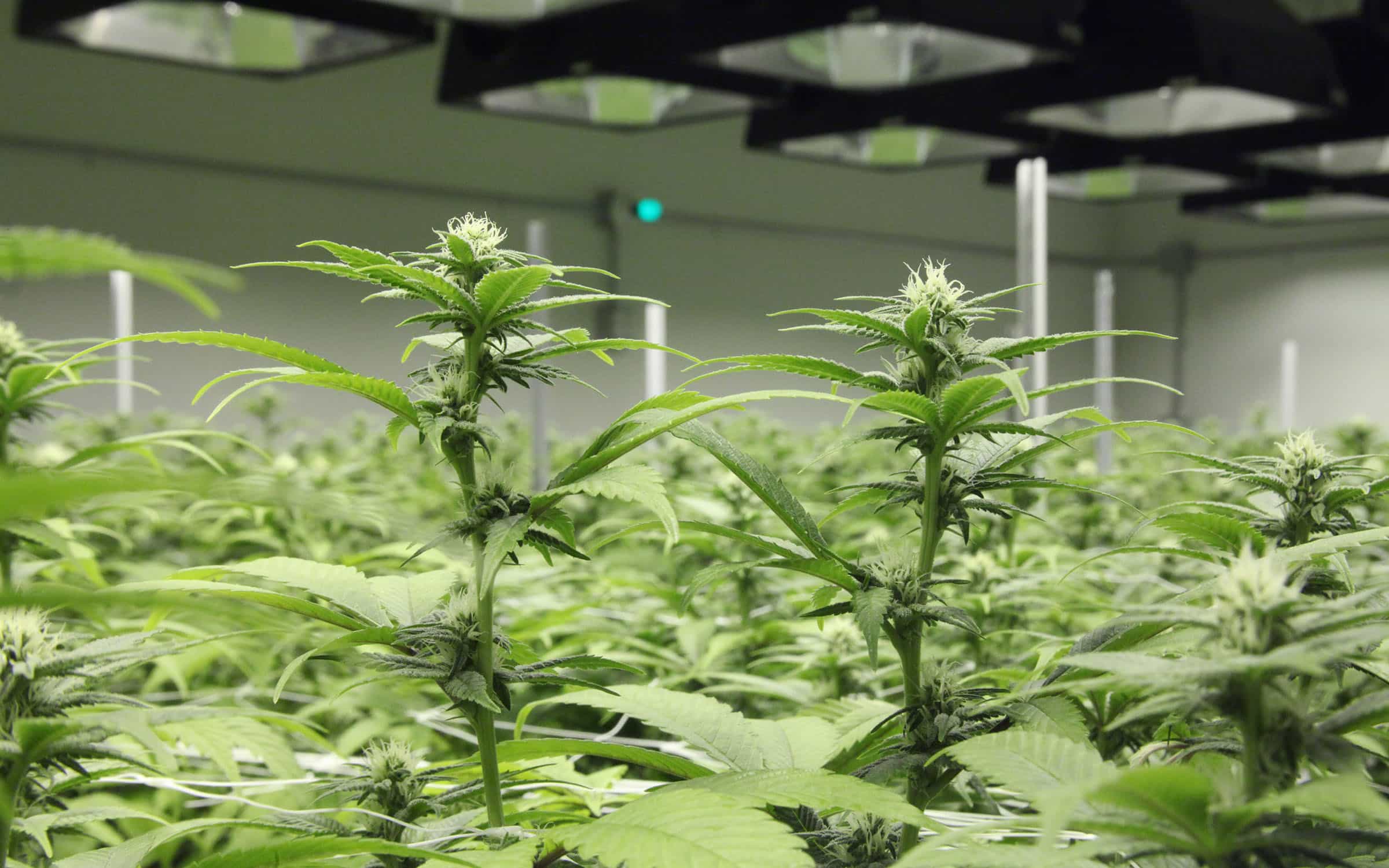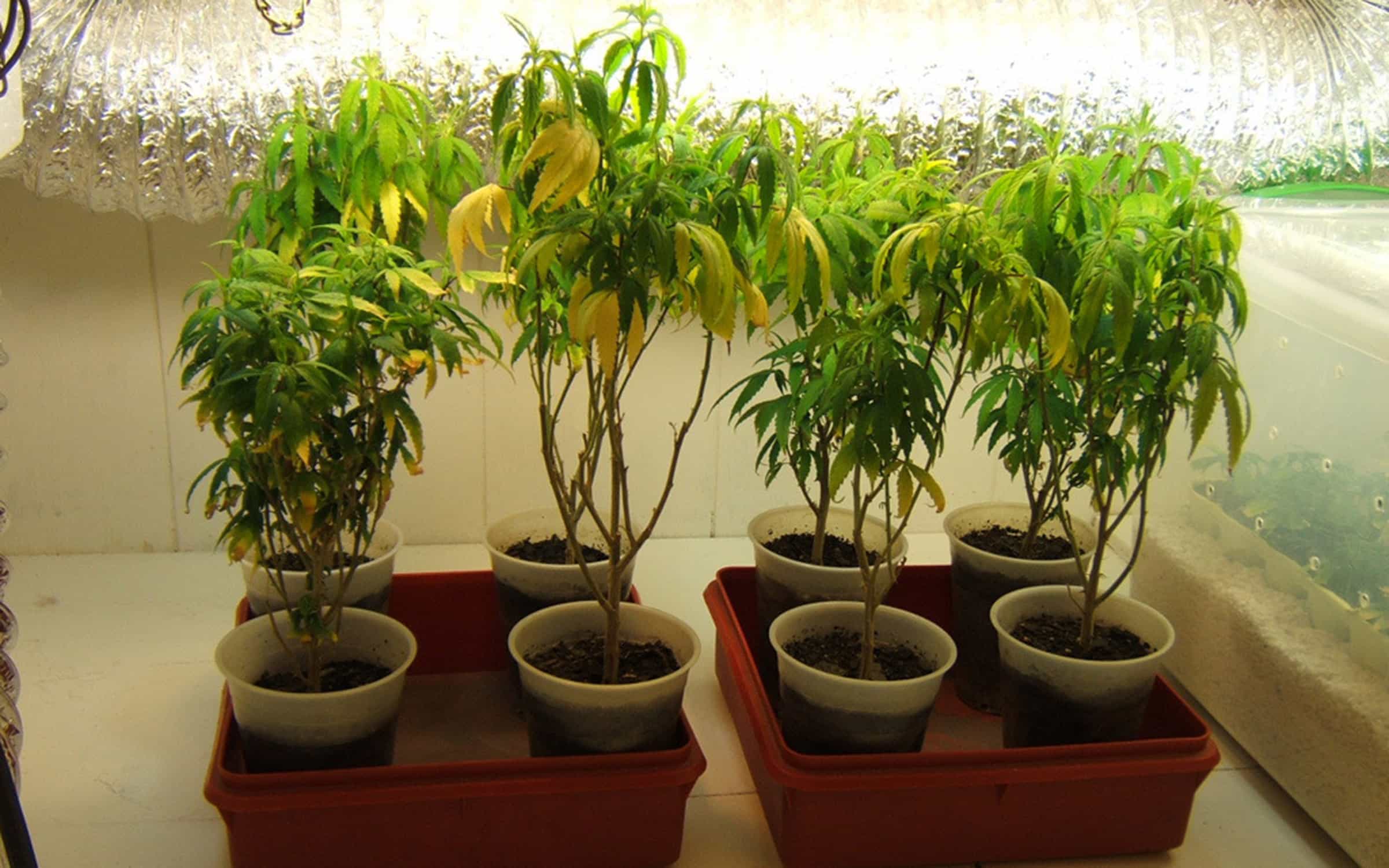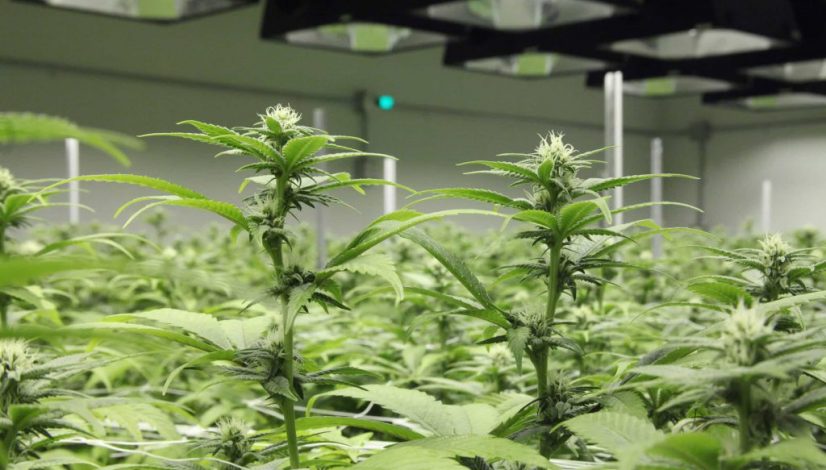Nico’s Nuggets: Common Solutions for Wilting/ Drooping Leaves
Dearest Nico,
Please help us! We have a few young seedlings, about four weeks old now, and they all have wilting or drooping leaves. The color is good, but the leaves are heavy and sagging. Some have wilted to nearly nothing. We water them twice a day. Please save our babies! Thank you!
— Margie & Anna V. via the mailbag at [email protected]
Greetings, ladies.
Thanks for writing us with a very good question. We actually get a ton of “leaf wilting” questions in the mailbag every month, so I am happy to finally answer this one!
It is important to understand that wilting/drooping leaves means that there is a deficiency somewhere within the plant. A deficiency can come from one or multiple areas (let’s hope it is just one). The primary areas a plant receives nutrition from are: light (photon energy), atmosphere (CO2 and O2) and medium (H2O and mineral nutrients).

An example of healthy plants, with leaves cupped upwards toward the light. (Photo by Nico Escondido)
Wilting/ drooping leaves are most commonly a sign of problems with water and/or nutrients. You did not mention any discoloration of the leaves, which is good, leaving us to focus mostly on hydration and not mineral deficiencies. But to start, we need to make a distinction between the terms wilting and drooping.
When it comes to drooping leaves, the issue is most often due to over-watering, believe it or not. Sometimes water stress, such as “drowned roots,” can cause abscisic acid to build up, closing down the leaf stomata and creating problems in both respiration and photosynthesis.
Wilting leaves, which is actually defined as having water loss or being dehydrated, is obviously associated with a lack of water. Wilting leaves will be dry to the touch and even a bit crumbly. Because you water twice daily and state the leaves are “heavy,” my guess here is the former—over-watering.
Over-watering can also cause the soil or grow medium to compress and suffocate the roots, which respire by breathing in oxygen (O2) during the dark or night cycle. The top third of the root structure contains air-specialized roots for this purpose (while the bottom third of the root structure is known as “water roots”). If the grow medium becomes too compacted, the breathable roots may lose their ability to respire and absorb oxygen, which they use to convert sugars to energy. Both the loss of oxygen and the build up of abscisic acid will severely weaken steams and leaves of the plant above the surface.
Now, if your plants are more wilting than drooping, meaning they are dry and crumbling, the issue is more likely to be under-watering. Test the soil for moisture content by pressing your index finger about an inch down into the medium. You should feel some moisture and coolness. While watering plants twice a day sounds like plenty of water, if you are only pouring in a few drops, it might not be enough.

An example of drooping plants, with heavy, wet sagging leaves. (Photo by Nico Escondido)
Generally, good watering practice dictates that you water each plant once, at the start of the day when the sun/ lights come up. Saturate the medium well, until you see the first drops seep out of the bottom of the container. That will be enough water for the day. It is also a good idea to let the medium become fairly dry—at least near the surface of the medium—before attempting to water the plant again. It is important to remember that while the plant itself breathes in CO2, the roots beneath the surface breath in oxygen (O2) during the night cycle. This is an essential part to healthy plant growth and development. And a dry, aerated medium goes a long way in allowing air to permeate the root zone and roots to breathe in their precious O2.
To fix the drooping, allow the medium to dry out overnight (completely) and use a thin stick (i.e., a skewer) to gently poke holes around the surface of the medium to help aerate—taking care not to damage any roots below. Poke around the edges, about an inch or two down, making a circling motion with the stick to make small holes.
Take another thin stick and use it as a support stake, if necessary. Stake it near the base of the plant and rest or tie the main stem to it. Make sure the plant’s main stem and branches are not thin and spindly. If they are, this could also be a sign they are stretching for light. Make sure your plant is directly under the light source and receiving around 18 hours of light per 24 hours to help it vegetate.

A semi-wilted leaf that is dry and cracking. It also has a mineral deficiency, most likely potassium (K). (Photo by Nico Escondido)
You are likely still a few weeks to a month away from being able to switch to a 12/12, light/dark cycle to induce flowering because of this setback with the drooping leaves. However, with some diligence and care, you can easily get your babies to bounce back and have a productive life cycle.
Don’t miss the previous Nico’s Nuggets: Cloning Plants Made Easy


